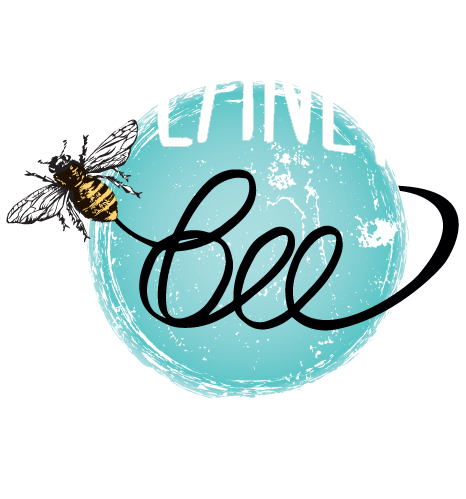Worker Bee Jobs Keep the Girls in the Hive Busy!
- Layla Dargahi and Haley Todd
- Apr 13, 2022
- 4 min read
Updated: Apr 10, 2024
We all know that bees work hard, but what are they actually doing in there?!

It may come as a surprise, but honey bees progress through different jobs in the hive (to keep it buzzin’), as they get older and smarter! There are three main castes of honey bees: drone bees, queen bees, and worker bees. All three are essential for the hive to thrive, and they are all very different, each contributing and playing a unique role.
Drones are the male bees in the hive and their only purpose or reason to be alive is to mate with a queen (from another hive of course!). They live about 3-6 months if they don’t find a queen to mate with, which isn’t so bad since they die after they mate! If they fail to mate with a queen and come back to the hive, the worker bees will eventually evict them from the hive when the colony starts to contract for winter, since drone bees eat more honey than the smaller worker bees do and because they don’t help out in the hive at all! The female worker bees that remove the male drones from the hive may seem ruthless, but the lack of contribution and drain on resources puts the hive at risk for making it through the difficult winter. Times are tough in the cold, and those who don’t contribute - are out!
Each hive has one queen bee that is responsible for creating new bees. First, she goes on a mating flight where she mates with about 15 different drones. Then she lays eggs every day after that, while worker bees cater to her every need - and do all the other work in the hive too. She lives about 2-5 years and lays about 1500-2000 eggs per day at her peak. Once the queen gets too old, the worker bees will decide to create a new queen.

Worker bees make up 99% of the hive and house a multitude of responsibilities, all of which change with their different phases of life. There are about seven different jobs a worker bee will be responsible for in her lifetime, although not all bees do every single job. Worker bees live about 4-6 weeks and do ALL the work in the hive. They work so hard that they work themselves to death!
When a worker bee is firstborn, she cleans her cell and removes any bodily waste left from coming out of the egg, as to prepare the cell for the next egg. This “cleaner” role lasts for the first couple of days as the bees utilize their mouths and front legs to clean. Afterward, they can hold the job of the “undertaker”, where they clean out dead bodies or unhealthy bees to prevent disease. Worker bees are incredibly clean creatures since they have so many family members within such small living quarters.
A young worker bee can then become the babysitter of the hive or the “nurse” bee, as they help aid and feed young larvae around 10,000 times a day! After they outgrow their role nursing larvae, some worker bees may become a “queen’s attendant”. Most of their work attending to the queen merely consists of cleaning her, feeding her, and removing waste that is around her - the queen basically has her own entourage!

Another worker bee job is the “honey maker” bees. They collect the nectar that the matured field bees brought back to the hive, put it into cells, and work hard to transform the nectar into honey.
Some bees might become “wax maker” bees. They use glands in their abdomen to build their honeycomb home or to seal up cells once an egg has been placed inside or once the cell is full of honey!
Once a worker bee has matured enough, they will move from the more simple in-hive jobs to the more difficult jobs outside the hive. Bees can become “guard” bees where they guard the entrance of the hive from foreign intruders, like bears, mice, or wasps.

Then, the bee will graduate to the most difficult job at the end of their lives, the “forager” bee, where they collect nectar and pollen to bring back to the hive. When they leave the hive for the first time, they have to familiarize and map out their new surroundings in order to work efficiently and be able to find their way home. For humans, the forager bee should be the most celebrated, as that job is responsible for pollinating more than ⅓ of the food that we eat. Next time you see a bee on a flower, don’t forget to say thank you!
The various stages of life and the incredible responsibilities of the worker bee prove how essential they are to their eusocial colony within the hive. Drones and the queen are responsible for creating more bees, while worker bees do pretty much everything else. We are happy to celebrate the hard work of our fuzzy friends (especially worker bees) because without them there would be no honey and much less diversity in our selection at the farmers market or grocery store. So next time you buy a delicious strawberry or eat a a piece of apple pie, remember to thank a bee!
Sources:
********************
Written by Layla Dargahi and Haley Todd



